Shipbuilding in South Korea
Leveraging South Korean Shipbuilding Expertise for India’s Maritime Resurgence
This report analyzes the strategic opportunity presented by deeper maritime collaboration between India and the Republic of Korea (ROK), focusing on the integration of ROK’s world-class shipbuilding technology with India’s rapidly expanding port and logistical infrastructure. This cooperation is vital for supporting India’s vision of becoming a global maritime powerhouse and accelerating the “second wave” of high-tech South Korean investment.
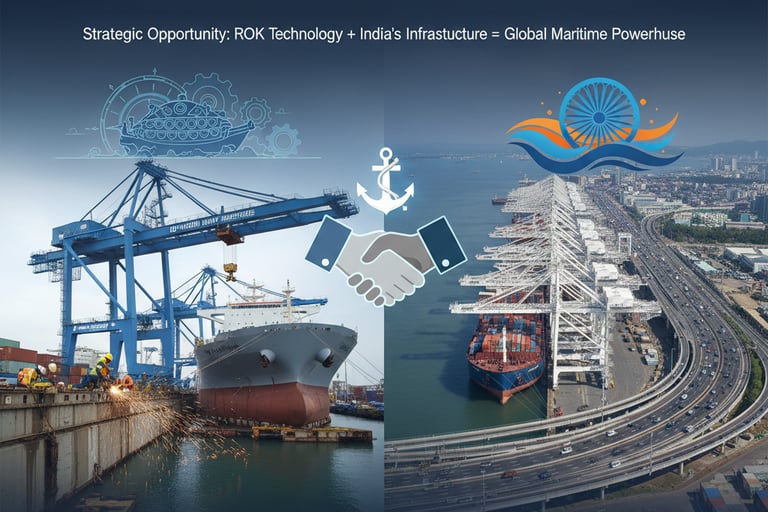

The ROK’s Technological Leadership in Advanced Vessels
South Korea maintains its global dominance in the maritime industry through sophisticated engineering and digital innovation. Key characteristics of the ROK shipbuilding sector include:
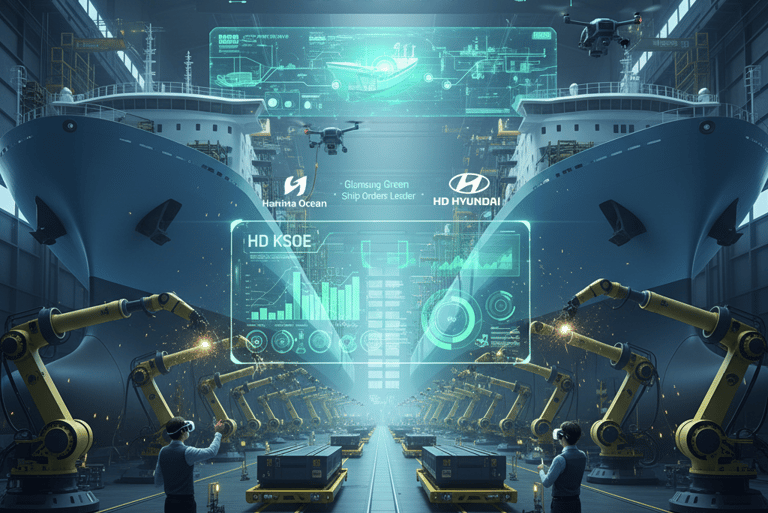

Global Command in Eco-Friendly Ships: South Korean shipbuilders, including giants like Hanwha Ocean, Samsung Heavy Industries, and HD Hyundai Heavy Industries, are pioneering the construction of advanced vessels. Notably, South Korean shipyards rule the world’s eco-friendly vessel market, with HD Korea Shipbuilding & Offshore Engineering (HD KSOE) securing 19 out of 24 ship deals for these costly, environmentally conscious vessels earlier this year (as of the source date).
Digital Shipbuilding Transformation: The future of shipbuilding is shifting towards digital integration and automation. South Korean companies are actively developing digital shipyards, such as the one being funded and developed by Samsung Heavy Industries. This digital model leverages the Industrial Internet of Things (IIoT), augmented reality for production and repair, robotics, 3D illustrated work packages, and integrated manufacturing management platforms. This transformation is essential for achieving new levels of productivity and quality while responding to intensifying international competition.
India’s Ambitious Maritime Infrastructure Roadmap
India is strategically focused on strengthening its maritime sector, recognizing its criticality to national competitiveness and trade, as nearly 95% of the country’s trade by volume and about 70% by value moves through sea routes. This commitment is formalized through comprehensive national strategies:
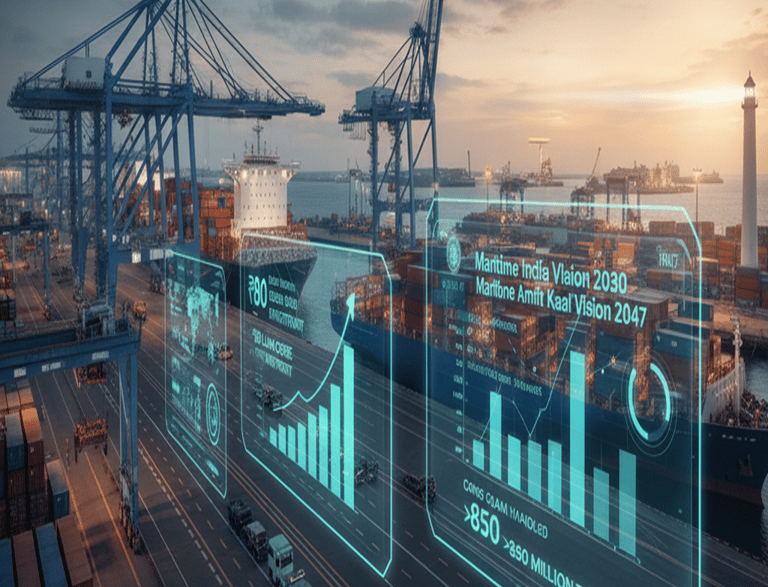

Visionary Goals: India is charting a transformative course through the Maritime India Vision 2030 (MIV 2030), which features over 150 strategic initiatives and projects a total investment of *INR 3–3.5 lakh crore* across ports, shipping, and inland waterways. This is reinforced by the Maritime Amrit Kaal Vision 2047, which aims for India to be among the world’s top maritime and shipbuilding powers by the centenary of independence, with nearly Rs. 80 lakh crore earmarked for the sector.
Infrastructure Momentum: The capacity of India’s ports sector has nearly doubled, rising from 1,400 MMTPA to 2,762 MMTPA. Major ports handled approximately 855 million tonnes of cargo in FY 2024–2025.
Role of Indian Industrial Powerhouses
India’s private sector is driving substantial investment in port and shipbuilding infrastructure:

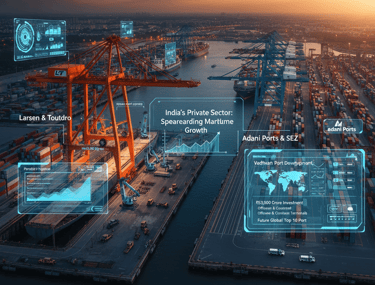
Larsen & Toubro (L&T): As a USD 23 billion Indian multinational engaged in EPC Projects, L&T is heavily involved in maritime development. L&T GeoStructure, a wholly-owned subsidiary, has secured multiple significant orders, including the construction of a South Breakwater Extension, Groynes, and a Breakwater Toe Protection Wall at Paradip Port, Odisha. Furthermore, L&T secured an order from *Hindustan Shipyard Limited (HSL)* to augment the Slipway-4 in Visakhapatnam, Andhra Pradesh, which includes upgrading the slipway, constructing the crane track, and supplying and erecting a 300 MT Goliath Crane.
Adani Group (APSEZ): Adani Ports and Special Economic Zone Ltd (APSEZ) operates India’s largest commercial port in Mundra, Gujarat. APSEZ has evinced strong interest in major upcoming projects, signing two Memoranda of Understanding (MoUs) worth Rs 53,000 crore to participate in offshore projects and container terminal development at the upcoming Vadhvan port in Palghar. If developed by an Adani Group subsidiary, the greenfield Vadhvan port is projected to be among the top 10 ports globally upon completion.
Policy Rationale: The Strategic Complementarity
The current landscape creates a unique synergy for collaboration, positioning the partnership as a necessity rather than a choice. India’s goal to become a top-five shipbuilding power by 2047 requires cooperation with advanced shipbuilding nations to overcome the current shortage of vessels and constraints of an underdeveloped domestic shipbuilding industry.
The strategic complementarity is clear:
ROK Strength: South Korea possesses world-class shipbuilding technology.
ROK Challenge: ROK is constrained by an ageing workforce and faces saturation in domestic production conditions.
India Strength: India has abundant manpower and a large, youthful workforce.
India Challenge: India lacks construction capabilities, advanced technology, and training systems.
According to India’s Deputy Minister Ramachandran, mutual cooperation, where South Korean technology meets India's manpower and locations, can maximize benefits for both sides. This cooperation is viewed not only as commercially rational but also strategically essential for securing a national fleet against international shipping market volatility, as emphasized during crises like the COVID-19 pandemic and the Russia-Ukraine war.
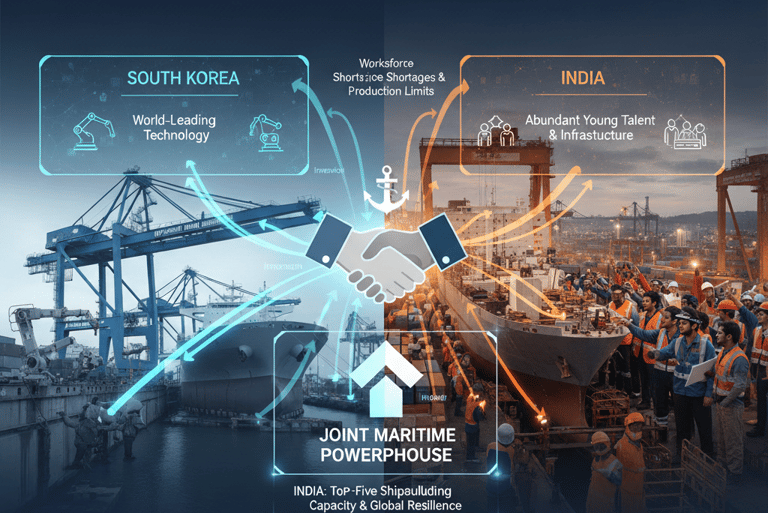

Policy Recommendations for Deepening Maritime Cooperation
To fully capitalize on this synergy, policy measures must translate complementarity into tangible outcomes and genuine technology transfer. Key recommendations include:
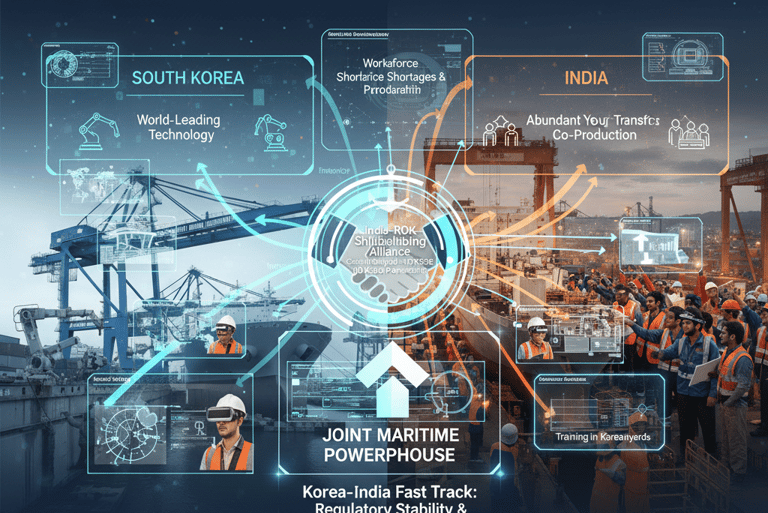

Establish a Comprehensive India-ROK Shipbuilding Alliance: The two nations should formalize a ‘India-ROK Shipbuilding Alliance’. This alliance must extend beyond commercial transactions to focus explicitly on technology transfer and co-production. An important step in this direction was the recent agreement signed between Cochin Shipyard Limited (CSL) and South Korea’s HD Korea Shipbuilding & Offshore Engineering (HD KSOE) to collaborate on building large ships in India.
Prioritize Workforce Training and Skill Transfer: India’s abundant workforce must be trained in advanced ROK shipyards to acquire critical skills that can strengthen the domestic shipbuilding ecosystem upon transfer.
Invest in Smart Shipyard Development: Partnerships in AI-driven smart shipyards are essential for modernization. This technological integration aligns with India's goal to promote a cluster-based development model that links shipbuilding with heavy industries, steel production, and multi-modal logistics parks.
Catalyse High-Tech Investment: To attract a “second wave” of ROK investment beyond consumer goods, India must make technology transfer central to its partnerships in strategic industries. High-level policy assurances are required to encourage South Korean corporations toward models of joint production and co-development.
Address Regulatory Certainty: South Korean companies consistently cite challenges with unpredictable policy shifts, lack of consistency in laws, and aggressive tax enforcement in India. Strengthening the recently launched ‘Korea-India Fast Track Mechanism’ is critical to resolve these regulatory challenges and foster a more predictable and conducive business environment.
Connect
Join us in sustainable innovation efforts.
Engage
Support
© Donghaeng-manthan 2025. All rights reserved.
